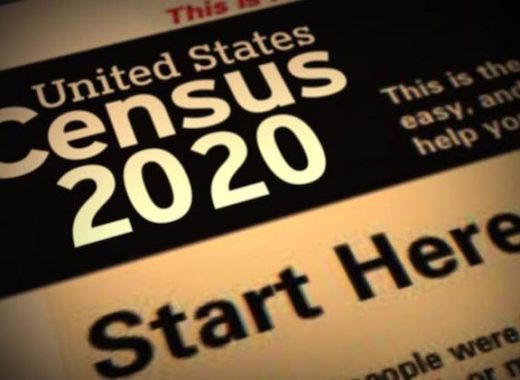This piece is jointly authored by Sally C. Pipes and Wayne Winegarden
The pharmaceutical supply chain is rife with misaligned incentives. Due to these disincentives, policies that make sense under most market conditions create problems that harm patients. Coupling the fees of pharmacy benefit managers (PBMs) to the discounts they negotiate exemplifies this problem.
The three largest PBMs—Caremark (CVS Health/Aetna AET 0.0%), Express Scripts ESRX 0.0% (Cigna CI -0.8%), and OptumRx (UnitedHealth Group UNH -0.4%)—control 80% of the market and are integrated into large health insurance conglomerates. PBMs negotiate drug prices with pharmaceutical companies on behalf of insurers and manage their drug formularies. PBMs’ control over drug formularies—the list of insurers preferred medicines and patients’ cost sharing responsibilities—is the leverage PBMs use when negotiating with drug manufacturers.
Consistent with current market theories, PBMs are compensated based on the size of the discounts they negotiate with manufacturers—their compensation is “coupled” to the discounts. If PBMs’ incentives were aligned with patients’ interests, then this typical compensation structure would make a lot of sense.
Alas, that is not the case. PBMs are responsible for minimizing the costs that insurance companies pay when patients are prescribed medicines, particularly expensive medicines. PBMs are not directly responsible for controlling costs for patients.
Worsening the problem, drug manufacturers do not generally sell their medicines directly to patients. Instead, manufacturers must bypass the PBM gatekeepers to get the insurer to allow the manufacturer to sell their drug to the patient. This convoluted process has significantly misaligned the market incentives.
To ensure that patients have access to their medicines, drug manufacturers focus on obtaining the best possible formulary placement, incentivizing manufacturers to offer PBMs the lowest net price on their drugs. But it is the term “net price” that is the key issue.
There are two ways to get to a low net price. Manufacturers can list the drug at the lowest price they are willing to offer, or they can list the drug for a higher price and then offer a discount that, once deducted from the higher price, equals the lowest price they are willing to offer. Because PBMs’ reimbursement is based on the size of the discount, PBMs prefer the latter compensation structure. And lo and behold, this is the pricing structure that prevails.
As Drug Channels documented, the list price of drugs (i.e., the higher price) has been growing between 4% and 6% annually over the past five years, while the net price (i.e., the price including the discounts) has been declining over the same period. Therefore, the spread between the gross and net prices (what Drug Channels has designated the gross-to-net bubble) has grown tremendously.
PBMs’ fees are linked to the size of the discounts, indicating that the revenues of PBMs have been steadily growing during this period. The costs for insurers have been controlled because the PBMs pass along the discounts to their “customers,” offsetting insurers’ costs. The problem is patients don’t receive these discounts.
In fact, the discounts raise costs for patients. Patients without insurance typically must pay the inflated list prices when purchasing drugs; patients with insurance are harmed as their cost sharing expenditures are typically based on drugs’ higher list prices.
Therefore, the link between PBM compensation and the size of the negotiated discounts has inequitably shifted costs from insurers to patients. The system persists because PBMs are responsible to insurance companies, not patients.
Put differently, coupling PBM compensation with the size of the negotiated discounts aligns the interests of PBMs and insurers (as economic theory suggests) but misaligns the interests of PBMs and patients. It is this misalignment that is driving up out-of-pocket costs for patients who require expensive medicines even though net drug prices are declining.
Ignoring these market realities, advocates claim that there are costs from decoupling PBM compensation to the size of the negotiated discounts. Specifically, they assert that decoupling eliminates PBMs’ incentive to negotiate discounts, which will drive up costs for Medicare and other payers.
Ignoring that PBMs and insurers are often the same company, this response essentially argues that sophisticated insurance companies that are aware of the current net costs of drugs would sit idly by while PBMs allow insurers’ drug costs to increase. Clearly an unlikely outcome. Further, if PBMs can only reduce insurers’ costs if they are allowed to perpetuate the opaque pricing system that harms patients, then it is unclear whether PBMs add any value at all.
The benefits from delinking PBMs compensation from the size of the negotiated discounts are clear once the misaligned incentives inherent to the current system are considered. Due to these misaligned incentives, excessive amounts of drug costs are transferred to patients. This inequitable transfer drives the current drug unaffordability issues, which is better understood as a problem of excessive out-of-pocket costs for patients, not excessive drug prices.
Sally C. Pipes is President, CEO, and Thomas W. Smith Fellow in Health Care Policy at the Pacific Research Institute. Wayne Winegarden is Senior Fellow and Director of the Center for Medical Economics and Innovation at the Pacific Research Institute.
Follow me on Twitter. Check out my website.








